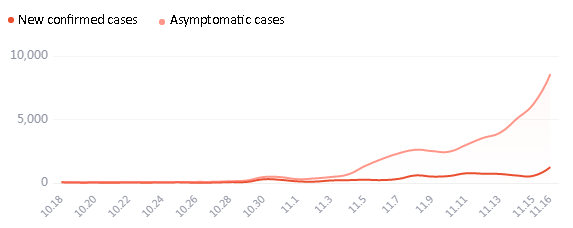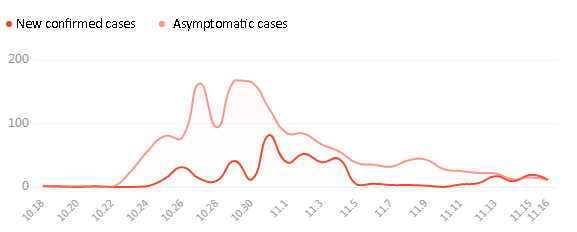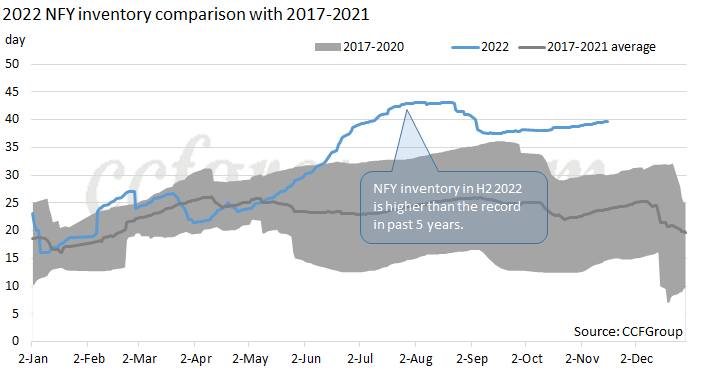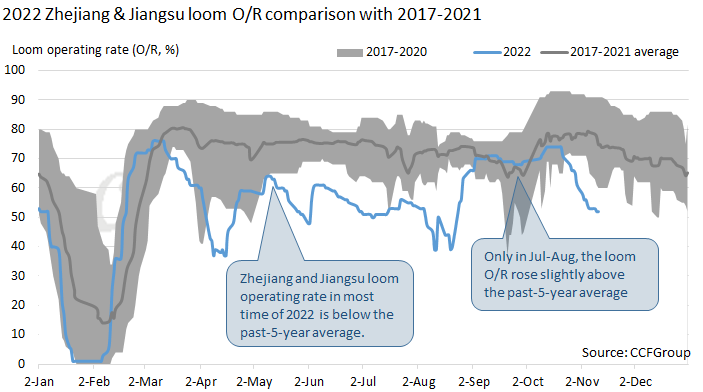With rising COVID-19 cases in Guangzhou, nylon textile filament in doldrums
The news of lockdown in Guangzhou's large wholesale fabric market had become the top line in social media in China in late October. Still the epidemic in Guangzhou has instead intensified and the downstream market may face a dismal closing of the shopping festival in November.
As of November 13, 707 new confirmed cases and 3,941 new asymptomatic infections were reported in Guangdong Province, mainly concentrated in Guangzhou. The number of new cases in Fujian Province has dropped significantly, and there are no new confirmed cases in Fuzhou.
At present, Guangzhou Zhongda wholesale cloth market, Shahe garment market and other markets are under epidemic control. But the impact of these closures might be limited, as merchants can still take orders through online channels such as WeChat and deliver from warehouses in Foshan and other areas, where fewer pandemic influence is felt.
Local factories in Guangzhou are basically in closed management or shut down, the operating rate and logistics are both affected. Part of regions in Shantou were lock down, and local factories have a certain impact. The factories in Foshan and other low COVID-19 cases areas can run normally and the logistics are smooth. The epidemic in Fuzhou and Hanzheng Street in Wuhan has been effectively controlled and there are no closure control measures.


Some customers complained that 2022 is coming to an end in the torture of the epidemic and high temperature, but orders are never seen to grow. The author believes that the epidemic does cause regional disruptions in production and distribution, but the lack of demand is the main reason for the depressed market.
No improvement in orders from markets that are not controlled or have been unsealed has occurred. Hanzheng Street in Wuhan, China Textile City in Shaoxing, China Oriental Silk Market in Suzhou, Nantong Folded Stone Bridge and other major cloth and garment markets are currently less affected by the epidemic, but market transactions are still thin. Downstream market feedback was affected by the brief outbreak of the epidemic in Fuzhou at the end of October, but factory orders did not improve significantly after the end of the epidemic control.
Downstream finished goods inventory pressure is high, and the operating rate has gradually declined. Comparing the filament inventory in the previous five years (2017-2021), after June 2022, filament inventory has stayed above the historical highest level, only slightly lower in August, and then began to climb up gradually. In November, filament inventories are as high as about 40 days, more than ten days higher than the average rate of the same period of previous years. The high inventory of filament is mainly due to the obvious weakness of downstream demand, as grey fabric, textile and clothing are all under high inventory pressure. The operating rate of weaving mills in Jiangsu and Zhejiang in most of the time this year is significantly lower than the level of the same period in history, only briefly maintained a normal run rate in August-October, after November weaving mills start rate will rapidly decline. This year's market downturn has become a consensus, the Spring Festival will be slightly earlier than that in previous years, downstream factories will consider running at low rate to the end of the year or set off earlier for holiday. Some customers have said that the transaction may be ended earlier than the New Year's Day.


China domestic sales of textile & clothing have gradually weakened, at the same time the export orders have not improved. The orders for textile and clothing in this years' online shopping festival in November are generally weak. Domestic sales of filament declined rapidly in November, and all downstream links are not willing to stock up before the Spring Festival, since their inventory pressure is heavier than the same period of previous years. Exporters reported poor Christmas orders this year, and demand for spring and summer clothing also fell under inflation expectations in Europe and the United States, making it difficult for upstream factories to destock. It is gratifying to note that filament exports have increased significantly from 170000 tons to 210000 tons this year, but it accounts for less than 10% of China's total filament consumption, so the support is still limited.
To sum up, the epidemic has catalyzed the negative market sentiment in the fourth quarter, coupled with the macroeconomic downturn, so the downstream is generally pessimistic about the market before the end of the year. Whether future demand expectations can be reversed or not needs to be driven by clear positive policies. The recent Fed interest rate hike and Chinese epidemic prevention and control policy changes have repaired the market sentiment. However, for nylon downstream enterprises, whether the business status quo can be fundamentally changed depends on the stimulus of favorable policies to end user's demand. In the short term, it is difficult for demand to improve significantly, and filament prices will still be in a low consolidation by the end of the year.
- Top keywords
- Cotton Price
- Cotton Futures Price
- Cotton Futures
- CZCE
- PTA Futures Price
- Chemical Fiber
- Polyester Prices
- Wool price
- PTA Futures
- Shengze Silk
- China
- Yarn Price
- price
- China Textile City
- Fibre Price
- Benzene Price
- Cotton
- Index
- Cotton Index
- PTA
- fabric price
- NYMEX
- Top 10
- textile industry
- Spot Cotton
- Cotton Yarn
- Polyester Price
- Futures
- PTA Price
- cotton yarn price

